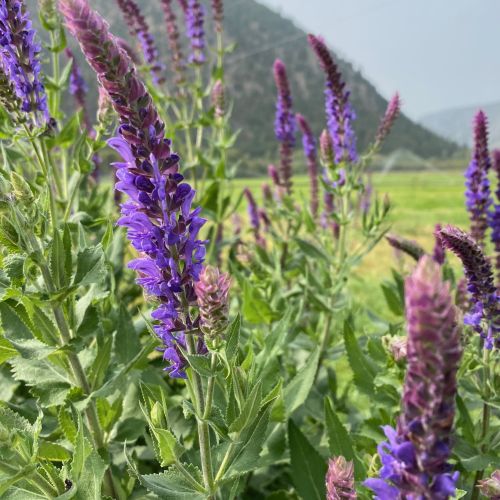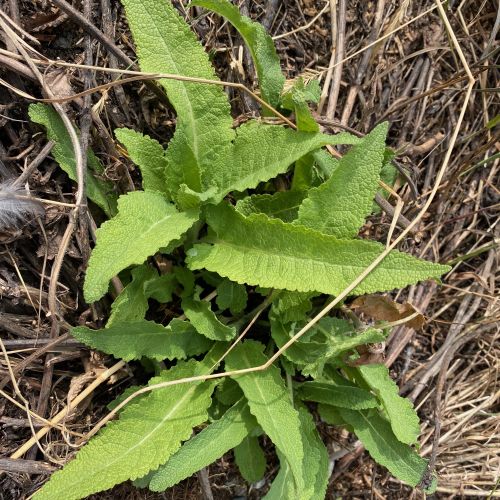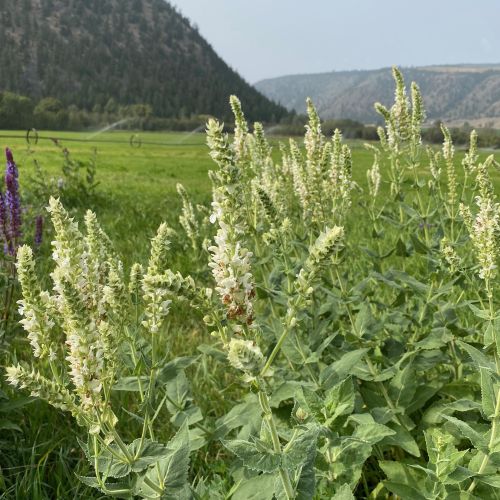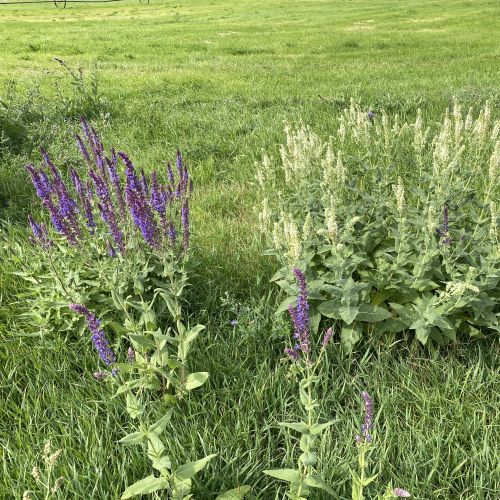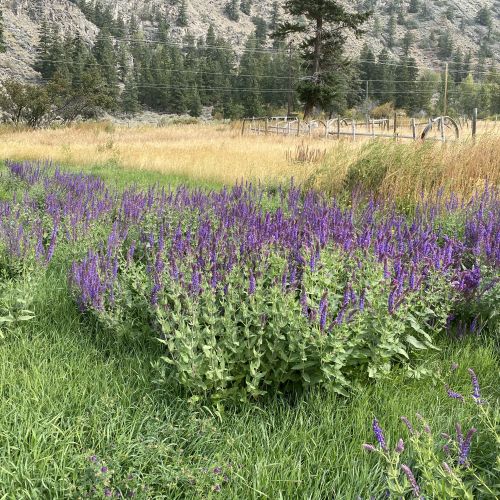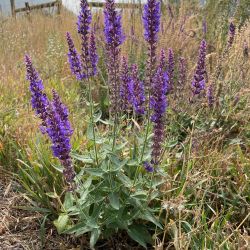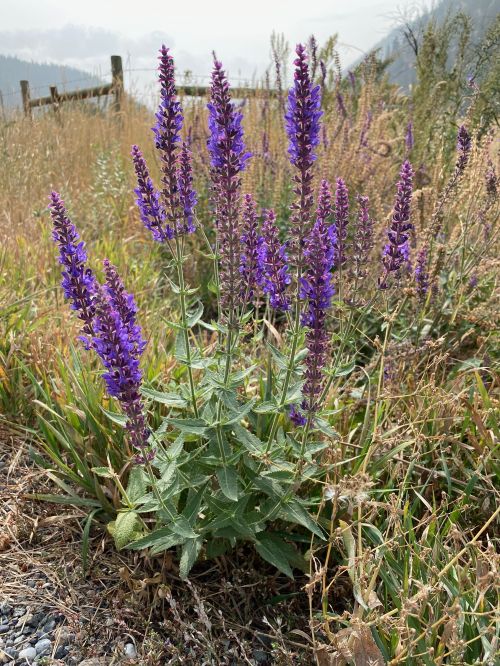
Priority: Contain
General: A garden variety of salvia in the Mint Family.
Height: Grows 40-80cm tall.
Flowers: Dense spike with tubular flowers that can be purple, pink or white.
Leaves/Stems: Stem is branched and angled with white, wooly hairs on it. Leaves are lance-shaped and growing opposite to each other out of the stem. The edges of the leaves are toothed but can be hard to see due to the hairs.
Root: Creeping root.
Woodland Sage
Native Lupine species like Silky or large-leaved (Lupinus species)
Differences: The easiest way to tell the difference between Wood Sage and a lupine is the stem. The stem of Wood sage is angled (or has edges) and lupines have round stems. The lupine leave is a very different shape as well: They have several leaflets growing out of a central location and have a hand-shape (palmate).
Where did it come from? Introduced from Europe.
Where does it grow here? It is a garden escapee. It prefers dry roadsides, pasture and disturbed areas. It has been found growing on the side of a highway and pasture in our region.
Reproduction: By root and seed.
When does it grow, flower & seed? Sprouts and forms a clump. Flowers June-September.
Spreads By: People plant this in their garden and it can spread into other areas beyond the garden. It could also be spreading from improper disposal of garden waste.
Plant Type: Perennial
- It has invaded alfalfa fields, pastures and highway right of ways.
- Review your property regularly for this species. Do not plant it in your garden.
- Treatment Remove small patches before it flowers & sets seed.
- Cover bare patches or disturbed soil by planting or seeding with non-invasives.
- Check areas where you have removed invasives for any new plants that year and in future growing seasons.
- Dispose of invasive plants responsibly. Bag them for disposal at the local landfill. Composting and burning are not recommended.
- Contact LRISS for specific treatment recommendations.
E-Flora BC: Electronic Atlas of the Flora of British Columbia
Photos taken by Jacquie Rasmussen, LRISS Executive Director
Photo Gallery
